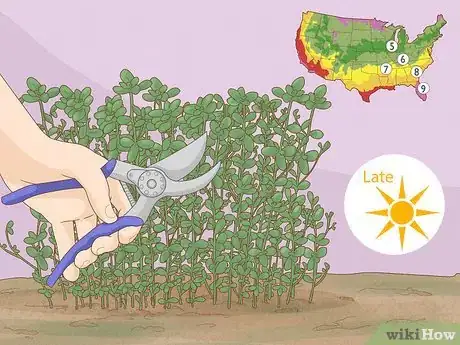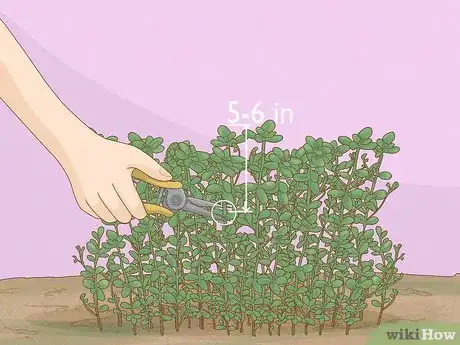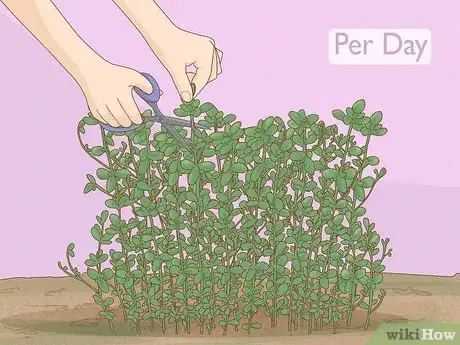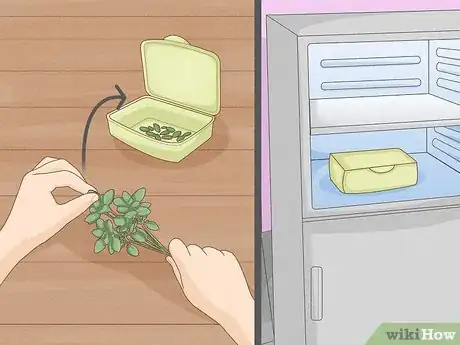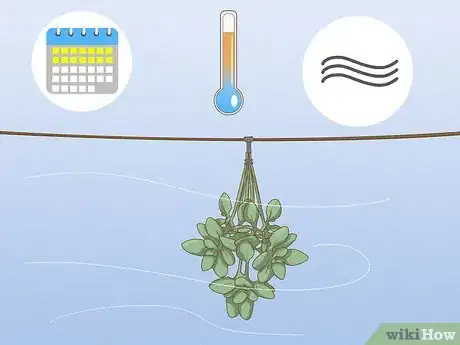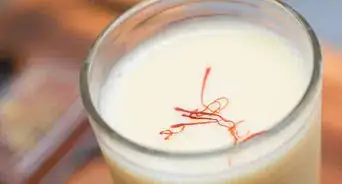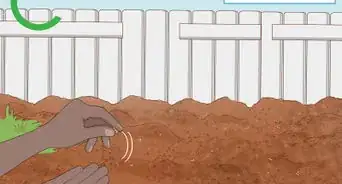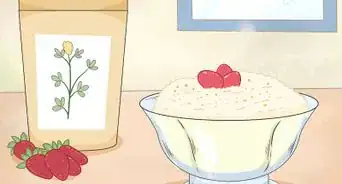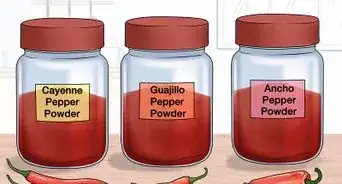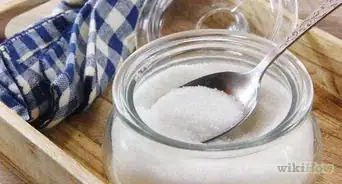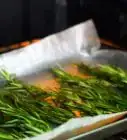This article was co-authored by Ben Barkan and by wikiHow staff writer, Hunter Rising. Ben Barkan is a Garden and Landscape Designer and the Owner and Founder of HomeHarvest LLC, an edible landscapes and construction business based in Boston, Massachusetts. Ben has over 12 years of experience working with organic gardening and specializes in designing and building beautiful landscapes with custom construction and creative plant integration. He is a Certified Permaculture Designer, is licensed Construction Supervisor in Massachusetts, and is a Licensed Home Improvement Contractor. He holds an associates degree in Sustainable Agriculture from the University of Massachusetts Amherst.
There are 10 references cited in this article, which can be found at the bottom of the page.
This article has been viewed 8,277 times.
Thyme is a kitchen staple for a reason. Its earthy, almost minty flavor pairs well with all kinds of classic dishes, and it can easily take a meal from bland to flavorful and delicious. If you're growing fresh thyme in your garden this year, you may be wondering how (and when) to harvest it. Don't worry—this guide will teach you everything you need to know about harvesting and storing fresh thyme so it's ready to be added to your cooking.
Steps
Harvesting Your Herbs
-
1Harvest your thyme in the late summer just before it starts flowering. While you can cut thyme at any point in the growing season, most of the oils are held in the leaves before flowers start blooming, so that’s when they’re most flavorful. Check your thyme plant near the end of summer in USDA Hardiness Zones 5–9 to look for buds forming on the stems. If there are small buds that haven’t opened into flowers yet, it’s a great time to harvest.[1]
- You can still harvest thyme after the plant flowers too, but the flavor might not be as strong.
- You may be able to harvest thyme from a plant if you planted it during the same year, but you’ll get larger, healthier growths if you wait until the second growing season.
-
2Wait until the late morning to harvest your thyme. Avoid harvesting your thyme too early in the morning since they’ll be wet with dew, and it could cause your herbs to rot earlier. Wait until all the dew evaporates and collect the thyme before the day’s harsh sun.[2]
- Heat from the sun during the day could dry out the leaves so they aren’t as flavorful.
Advertisement -
3Trim 5–6 in (13–15 cm) stems from the top growth. Use a pair of garden snips or scissors rather than pinching the thyme by hand. Look for a healthy green stem near the top of the plant that doesn’t have any woody growth on it. Place your snips just above one of the leaf nodes on the stem and make a clean cut.[3]
- Avoid woody growth since it won’t grow leaves with a lot of flavor.
-
4Leave at least 5 in (13 cm) of woody growth. Thyme is a perennial plant, so it will grow back the following season if you leave some of the stems. As you’re harvesting, only remove up to a third of the growth and at least 5 inches (13 cm) of thick woody stems on the bottom. Otherwise, your thyme plant might not grow properly.[4]
-
5Gather only what you plan on using each day. Rather than cutting off extra thyme, just leave it to grow on your plants. Look at what the recipes for the day’s meals require so know exactly how much you need to harvest.[5]
- If you’re growing a lot of thyme, ask friends or neighbors if they want any fresh herbs.
Storing and Preserving Thyme
-
1Rinse your herbs under cool running water and pat them dry. You don’t need to soak your thyme in water, but a quick rinse should be enough. Run some cold water from your faucet and gently rinse any dirt or dust off of the leaves. Set the stems a piece of paper towel and pat them dry so they aren’t dripping wet.[6]
- Let the stems dry completely so they’re less likely to develop rot.
-
2Keep fresh thyme wrapped inside your fridge for up to 1 week. Leave the leaves attached to the thyme stems so they preserve their flavor. Gently wrap the thyme in a piece of paper towel. Store the wrapped herbs in a resealable plastic bag and set it in your fridge for up to a week.[7]
- If your thyme looks limp or has a bad odor, then it’s gone bad and you can throw it away.
-
3Freeze your thyme to easily add to recipes. Remove the leaves from a fresh thyme plant and put them in an airtight freezer-safe container. Alternatively, you can scoop 1 teaspoon (0.8 g) or 1 tablespoon (2.4 g) of the leaves out in an ice cube tray and freeze them so you can easily pop them out and drop them into a pan. Just remember frozen thyme goes limp when it thaws, so it works best if you’re cooking with it.[8]
- When a recipe calls for thyme, use the same amount of frozen thyme as you would fresh.
- Frozen thyme usually lasts for around 4–6 months.
-
4Dry your thyme to sprinkle on dishes for stronger flavors. Tie the stems of thyme together with some string or a rubber band and hang them upside down in a warm and dry room with a lot of ventilation.[9] Leave the herbs to dry for 7-14 days until you can easily crumble the leaves between your fingers. Once the leaves dry, crush all of the leaves into an airtight container.[10]
- If you want to dry the thyme faster, you can also use a dehydrator or microwave.
- Dried herbs usually last for about 1–3 years before they lose flavor.
References
- ↑ http://sonomamg.ucanr.edu/Food_Gardening/Feature_Vegetables/Thyme/
- ↑ https://hgic.clemson.edu/factsheet/herbs/
- ↑ https://plants.ces.ncsu.edu/plants/thymus-vulgaris/
- ↑ https://plants.ces.ncsu.edu/plants/thymus-vulgaris/
- ↑ https://extension.umn.edu/vegetables/growing-herbs-home-gardens#harvesting-930514
- ↑ https://extension.umn.edu/vegetables/growing-herbs-home-gardens
- ↑ https://www.epicurious.com/expert-advice/how-to-keep-store-bought-herbs-alive-article
- ↑ https://extension.umn.edu/preserving-and-preparing/preserving-herbs-freezing-or-drying
- ↑ https://extension.umn.edu/vegetables/growing-herbs-home-gardens#air-drying-930960
